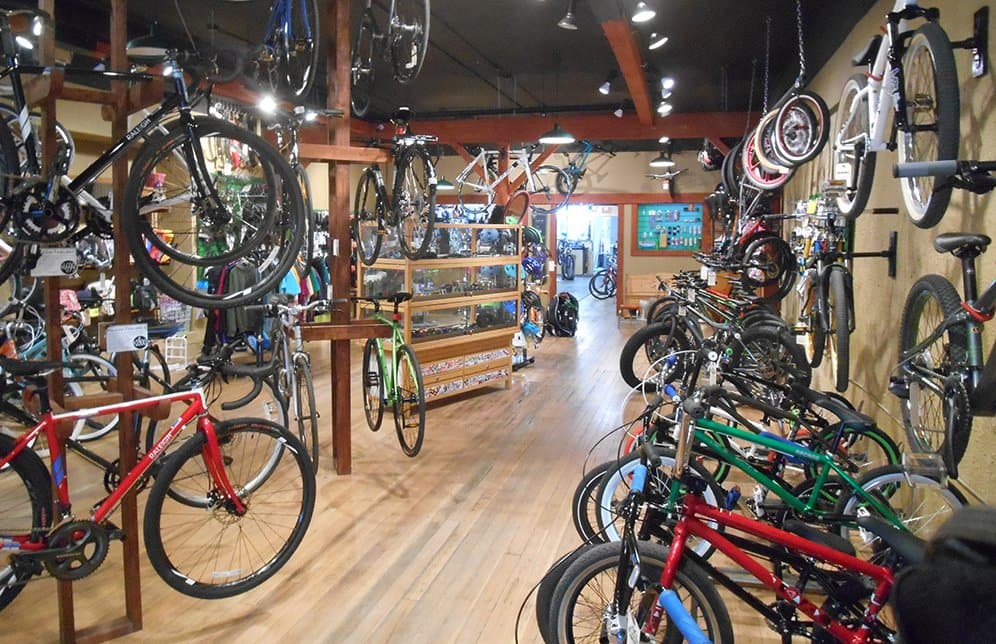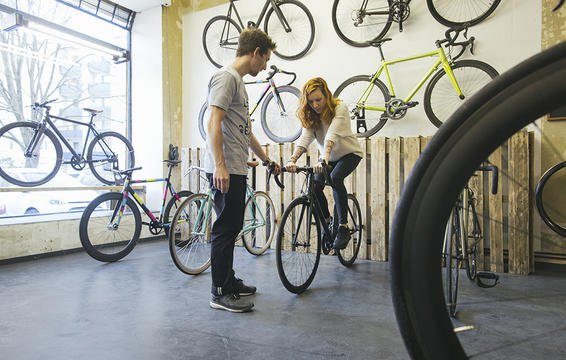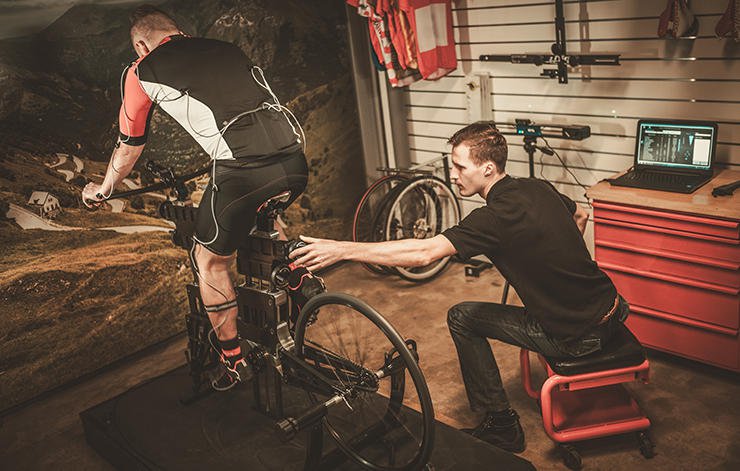10 Bike Fit Myths, Busted!
How to find a good fitter, what to ask, and what to expect during a bike fit.
If you’re experiencing cycling aches and pains due to spending quite some time in the saddle then you might consider heading to the local bike fitter. While bike fits can help, they don’t solve every problem. Here, we bust 10 myths about bike fitting, and demystify the process so you can get the most out of your next bike fit.
GENERAL FIT MYTHS
Myth: Fit system certification is a good measure of experience.
Reality: To learn about a fitter’s experience, ask about his or her experience.
The fit system itself – be it BGFit, SICI, Guru, or any other methodology out there—is just a tool. You can get a good fit using just about any fit system, but you might like one approach better than another, given that they are based on different philosophies. What matters most is the experience of the person doing the fit. “I frequently see people search out the fit equipment before the fitter, and that’s not a good approach,” says Ian Buchanan, co-founder of US based bicycle fitting studio FitWerx.
If you walk into a shop with four BGFit-certified fitters, one may be a master fitter with 10 years of experience and another may be a freshly minted graduate of the first-level certification course. Both may do great fits, but the reality is that fitters only gain experience by doing fits. You should know what you’re getting.
“Interview your potential fitter,” says Buchanan. “Ask, how long have they been doing bike fits? Do they have particular specialties, like triathlon fits or working with riders with anatomic issues such as leg-length discrepancies? What is their philosophy? How do the use the tools for which they are certified to properly fit you? These are all fair questions for which an experienced fitter will have ready answers.”
If you have a bad fit experience, it doesn’t necessarily mean that the methodology was wrong. The same system in the hands of a different fitter might yield different results.

Myth: Most of this new fit stuff is just high-tech geegaws; the old-school Eddy Merckx/Greg LeMond/etc. approach is all you need.
Reality: A lot of the old chestnuts about bike fit – aligning the front of the knee over the pedal spindle, for instance – don’t hold true anymore, if they ever did.
Bikes have changed dramatically since the 1980s, and so has bike fit. Equipment has driven some of that change – think of the replacement of quill stems with threadless ones, or the adoption of clipless pedals – but frame geometry is another factor.
In the 1950s, for instance, a racing bike had a far lower bottom bracket than one made today. So when you see an old picture of a racer on a bike showing just a fistful or so of seatpost, consider that more seatpost would be showing on today’s bikes with more contemporary geometry.
Or, take knee-over-pedal-spindle (KOPS) methodology. “Originally, it was a gauge for setting weight distribution,” says Cascade Bicycle Studio founder Zac Daab, referencing a 1972 training manual from Italy. KOPS was an easy way to get the rider in the ballpark for proper front-rear weight distribution, which is important for handling, but today’s fitters don’t need a plumb bob anymore as a guide for weight distribution, freeing them up to consider power production and injury prevention when determining proper knee placement relative to the pedal.
Myth: If a fit is comfortable in the studio, it should be comfortable on the road.
Reality: We’re a lot more restless on our bikes than we think.
Fits take place in a relatively static setting. The bike sits on a trainer, which doesn’t allow dynamic movement underneath the rider and tends to encourage pedaling at a single intensity in a single position (hands on the hoods and butt fixed in place on the saddle). Some of us make it worse by trying to look good during a fit. “All of that adds up to a fit that may not fully translate outdoors,” says Daab. “You can adjust the pieces of the bike only so far in the lab. Optimising position in that static environment, in a sitting position, can be a little misguided.”
To give yourself the best shot at a successful fit, try to forget that you’re being examined. Just ride. Second, put a little effort into it. Your position changes when you’re going hard because you stop thinking about it and focus only on what you need to do to sustain the harder effort. Putting more effort into the pedals may in fact reveal to the fitter any technique issues that could use addressing.
Myth: All this fit stuff is too complicated to understand.
Reality: Bike fitting is an art and a science, but it is and should be explainable.
It’s easy to be wowed by technology during a bike fit. A fitter may use multiple video cameras, infrared tracking, pressure monitors and other fancy equipment. The fit process itself may seem quasi-magical, but it’s important to take the time to understand it.
If you have questions, ask. If something doesn’t feel right, speak up. If you wonder why a fitter is making a particular change, inquire. You may not love the answer if, for example, the reason you have back pain has more to do with lousy posture and inadequate core strength than anything fit-related. But it should all explainable. “There should always be a ‘why’ for any given fit change,” says Buchanan, “and it shouldn’t sound like malarkey that someone just made up; it should make sense.”

GEAR FIT MYTHS
Myth: A fitter can fit you on a close-to-the-right-size bike.
Reality: You have to start with the right size frame.
Whenever Greg Combs, a master fitter at Velo Smart bike shop, gets a fit request that starts with, “I got this bike on Gumtree…”, his warning radar goes off. “There’s a misconception that people can buy something that’s close to the correct size, and the fitter can fix it,” he says.
But bike fit isn’t just about getting the right saddle height and the perfect-length stem to hit your reach number. It’s about putting the rider on the bike in a way that’s good for comfort, power transfer, and handling. With the wrong size bike, one (or more) of those has to give way because the physical geometry of the frame won’t allow optimal fit. Know what you will need bike size-wise before you pull the trigger on that bike you found online. It might mean paying a visit to your fitter before you start shopping.
Myth: I can change equipment without having to change my fit.
Reality: Pay close attention to part swaps – some matter far more than others.
Sometimes a bike fit includes changing parts like a handlebar, stem, or saddle. Be aware how each swap affects your fit. For example, the Gebiomized pressure-mapping system that some fitters use can show hot spots and broadly indicate the best saddle shape for your anatomy and pedaling style.
“People often think that changing pedals and shoes dramatically alters seat height, but more often than not, it’s pretty similar,” says Daab. “Saddles are another matter. We’ve found up to 1.5-centimeters difference in saddle heights between some models, measured from the rails to the top of the padding.”
Also pay attention to brand. Shimano’s newer hydraulic STI levers, for instance, have a much longer hood body than SRAM’s mechanical-brake DoubleTap levers. If you’re moving from one brand to another because, say, you got a new bike, take hood length into account when setting reach to the bar, because that’s the most common hand position.

Myth: I only need to get fitted on one bike and can transfer that to all my other bikes.
Reality: True, but only some of the time.
It might seem obvious, but fit for road bikes is different than mountain bikes. That’s partly a matter of geometry and equipment differences, like flat bars versus drop bars. But it’s also a reflection of how we ride each kind of bike.
Mountain bike fit is important, but since the position is more dynamic, you have more wiggle room. Road and cyclocross bike fits are broadly comparable, with perhaps small changes. “Often, I find that when people say their ‘cross bike position is different, it’s because their road position is all jacked up,” says Daab. “In an ideal world, your hood position on both bikes is optimised pretty similarly.”
TECHNIQUE AND FITNESS FIT MYTHS
Myth: A bike fit will fix those nagging aches and pains.
Reality: Any time you’re experiencing pain on the bike, you should examine your fit.
Chronic issues often have complex causes. Daab relates the story of a woman who suffered lower-back pain. A previous fitter had made her position more upright, with a shorter reach to the handlebar, but the pain didn’t go away. Daab suspects that the issue wasn’t purely bike fit, but also insufficient core strength. Fitters will often address chronic issues by offering advice on exercises or stretches that might help. “Be open to that advice,” said Daab. “Sometimes it’s hard for people to have their perceptions challenged.”
Give yourself time to adjust to a new fit. You’re challenging your body to move in ways that are subtly but powerfully different (see “technique” myth below). Changing years of ingrained movement patterns does not happen overnight.
Myth: If I get a bike fit once, that fit is my proper fit for life.
Reality: Fit changes over time as our bodies, equipment, and riding styles change.
If you started riding in the 1970s or ’80s, you probably had a bike with 170mm crank arms and 39-52 or even 42-52 chainrings. Today, crank lengths vary, and those are almost unheard of gear combinations. Chances are that, 30 years later, you probably can’t muscle that kind of gear anyway.
“A lot of riders who started riding back then rode powerful, low-cadence pedaling styles, but it’s too demanding on their joints over time,” says Buchanan. And as your gearing changes, so too do your pedaling style and your fit. That’s to say nothing of other age-related issues like chronic overuse injuries, and general wear and tear that can necessitate fit changes. A fit should last for awhile, but if it’s been, say, a decade since your last one, or you’re having chronic pain issues, it might be time for a refresh.
Myth: My bike fit should be adapted to my technique, not the other way around.
Reality: Bike fit should take your technique into account, but if you’re doing something wrong, no fit will fix the problem; you need to change your technique.
“A fit can’t change 15 years of ingrained habits that contributed to whatever issues you’re having,” says Buchanan. “No matter what I do with seat placement, if someone is over-rotating his pelvis, its effects aren’t going to go away.” Buchanan ends up talking about riding technique in more than half the fits he does to encourage people to change their riding style in a positive way.
When you change your position, you may also have to change pedaling style or cadence, or another crucial technique. Give it the necessary time for muscle recruitment patterns to re-shape – the process can take months. The notion of a bike fit as a quick fix is seductive, but people have to be willing to put in the time during and afterward to get the most out of a fit.
READ MORE ON: how to injury prevention



